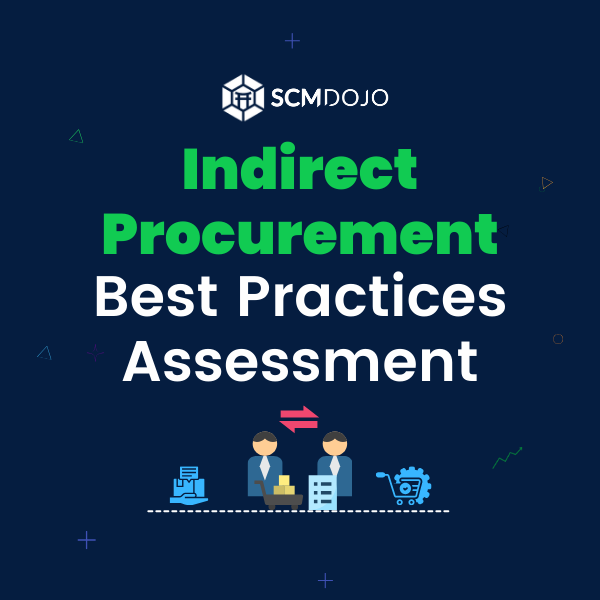There is an argument that suppliers achieved excellence when they work with excellent customers. This means that the customers should strive for excellence and assist the suppliers to do the same to achieve best customer supplier relationship?
Customer must ensure that both parties are working toward continuous improvement of customer supplier relationship. Good supply chain management alone will not make a manufacturer a good JIT operator. The relationship should be stronger if both parties are to gain benefits from it. It should be mutual, with both sides seeking to achieve excellence in customer supplier relationship.
10 Must Have Customer Supplier Relationship
Moody, P.E .,1992 has defined 10 areas which need to be considered in any customer supplier relationship. Let’s discuss them briefly one by one:
1. Early Supplier Involvement
Suppliers must be consulted early in the design of a new product or process and invited to contribute their specialist capability at this stage. This early involvement will enable them to prepare for the new product or process requirements and that could possibility result in a shorter lead time of product conception to production.
2. Mutual trust
Moody (1992) reported that some manufacturers announced that they will select suppliers based not only on cost but other factors such as technology sharing and cost reduction programs, but eventually, they will make the final decision.
Sometimes customers agreed to establish business relationships based on mutual trust but they imposed rules and regulations that do not reflect the building of trust. In such instances the supplier is inundated with quality audits and performance audits that adds more cost to the production process. Manufacturers and suppliers must honor each other’s trust and treat each other as equal partners in the business arrangement for better customer supplier relationship.
World class manufacturers should be attentive and action-oriented, according to Moody (1992), by resolving problems that limit the supplier’s ability to serve them properly. Motorola is a good example of a company which nurtures supplier relations, as they are very consistent in areas that affect a supplier’s overhead costs (Moody, 1992). They help smaller suppliers who may be vulnerable. These suppliers have to struggle to adopt multiple standard and other procedures as required by the manufacturing company.
3. Quality initiatives
Quality standards can be set mutually from the start and any problems in supply can be rectified together for better customer supplier relationship. Typically, this concurrent or simultaneous engineering approach will help engender strong commitments to make the new product a success if both the supplier and the manufacturer are involved and feel responsible for it. Unfortunately in my experience manufacturers and suppliers are not following these ideals in the real manufacturing world. But I believe we should for better transparency.
A cohesive quality planning is essential to foster continuous improvement, defect prevention and process optimization. It is required during all phases of product and process development. A living quality planning is a must be maintained throughout all phases of the product life cycle for continual customer supplier relationship.
4. Profitability
Manufacturers are under tremendous pressure to increase their own profits. Manufacturers have historically looked to suppliers to provide annual cost savings. And today, manufacturers are asking even more of their suppliers, including compliance with regulatory reporting requirements. Taken as a whole, these demands can put a lot of pressure on a supplier’s profit margins.
Just like customer suppliers needs to make money. Out of all the disrupters & risk I have in supply chain the biggest one is supplier going bankrupt, following by ERP implementation!
Like you, supplier needs to be turn out to be winner. If they make good margins from your business, they would want to do well and performance better which will lead to better customer supplier relationship.
And if you squeeze them too hard and they don’t make any profits from your business and suppliers will walk away. And the cost of replacing the supplier will be more than cost reduction you want from them (depending on commodity off course) in some cases.
5. Involvement in Product Development
Involvement in product development will help the suppliers to understand and be prepared for new product requirements. Your new product development process should requires that suppliers become involved in the design process early to ensure consideration of advances in technology and specific knowledge of our suppliers. The process allows us to work closely with our suppliers to ensure that the supplier is ready to manufacture the parts/products necessary and is prepared for production launch.
This will also help the supplier to prepare capital, resources and training to fulfill the new requirements and really engage them to achieve improved customer supplier relationship. Quality initiatives can be planned early and assist the supplier to implement them effectively when the time comes.
6. Schedule Sharing
The supplier should be informed of requirement schedules as early as possible. Time must be given to the supplier to respond to the demands. Any changes in requirements must be passed quickly on to suppliers to enable appropriate actions to be taken.
The manufacturers must plan schedules with suppliers in mind, their lead times, their planning time fences, production capacity etc. This will also help agility of your supply chain in demand fluctuation and enhance customer supplier relationship. Regardless of the planning system it is only beneficial to engage suppliers in various planning levels & cycles.
7. On-Site Assessment
I have seen examples where business is awarded to suppliers without visiting supplier premises and then when they face problems, panic starts! An on-site visit may be performed to evaluate the supplier’s operating and quality system. Then this should be followed by detailed self-assessments to determine the supplier’s effectiveness in key functional areas such as procurement, engineering, manufacturing, and quality.
When possible and appropriate these self-assessments will be performed by cross-functional teams. The purpose of a cross-functional team is to better substantiate the effectiveness of the supplier’s business, manufacturing, materials management, customer service and quality systems.
8. Response to Cost Reduction Ideas
Suppliers and manufacturers will be able to reduce the cost of production when cost driver identifications are carried out. An idea would be for customer and supplier to initiate cost reduction and improvement suggestions platform. A platform which helps in creating an environment that promotes open communication and mutual benefit for customer supplier relation. So that suppliers and its customers work together to maximize our collective success in the areas of product design, manufacturing improvements, quality, business and administrative improvements, logistics and sourcing strategies.
9. Communications, Training and Feedback
Finally training and education is necessary to ensure that suppliers understand the concept of integration in the supply chain to enable it to benefit the manufacturing system.
10. Crisis Management/Response
A proper channel of communication between supplier and manufacturer should be established to facilitate crisis management. The supplier should have business continuity plans to deal with: fires, chemical spills, natural disasters, terrorist threats, medical emergencies, pandemic, and HR related crisis.
Summary
The purpose of this blog is to communicate to customers and its suppliers the core areas that are to be used in the manufacture, design and development of parts and products supplied. I believe that keeping these 10 areas in mind will assist customer supplier relationship in the development of their business and manufacturing processes, contributing to mutually enhance future competitiveness and success.
Recommended Reading
Strategic Sourcing – Suppliers Are From Mars, Customers Are From Venus
Reference:
Moody, P.E .,1992. Customer Integration:W hy Being Excellent Customer Counts. Business
Horizon-Julyl August pps 53-57.
About the Author- Dr Muddassir Ahmed
Dr MuddassirAhmed is the Founder & CEO of SCMDOJO. He is a global speaker, vlogger and supply chain industry expert with 17 years of experience in the Manufacturing Industry in the UK, Europe, the Middle East and South East Asia in various Supply Chain leadership roles. Dr. Muddassir has received a PhD in Management Science from Lancaster University Management School. Muddassir is a Six Sigma black belt and founded the leading supply chain platform SCMDOJO to enable supply chain professionals and teams to thrive by providing best-in-class knowledge content, tools and access to experts.
You can follow him on LinkedIn, Facebook, Twitter or Instagram






